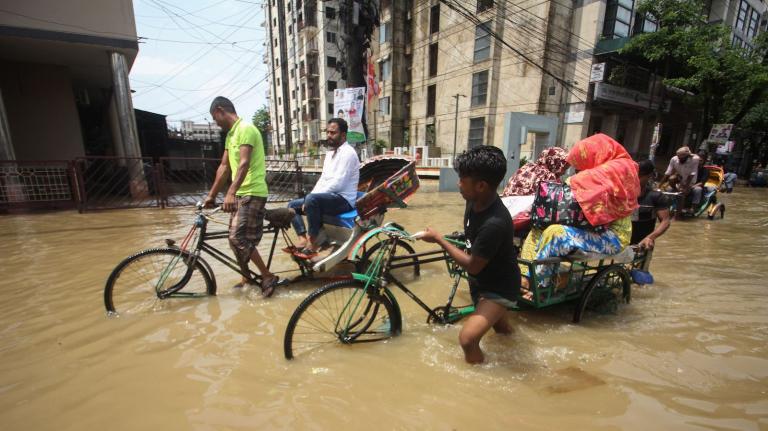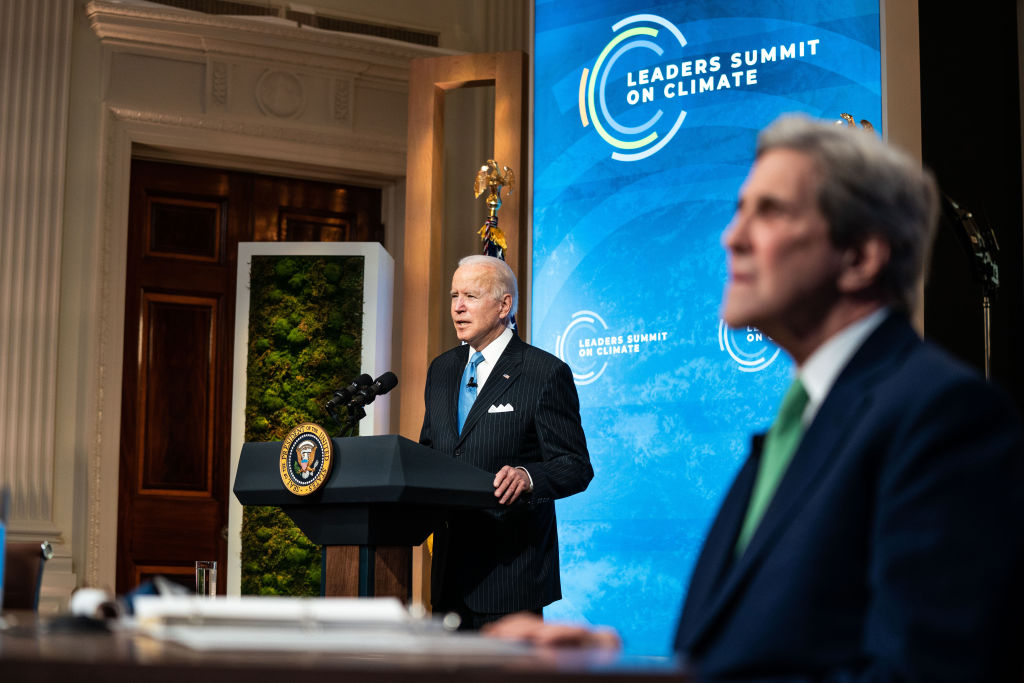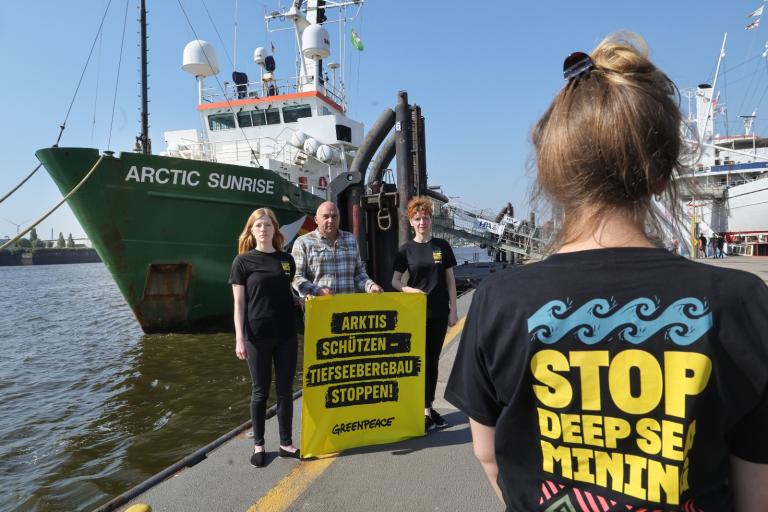At a New York Times event last month, Biden administration climate envoy John Kerry caused a stir when he appeared to dismiss the notion that the U.S. would compensate other countries for the loss and damage they’ve already suffered at the hands of climate change. He told the audience that it’s more important to focus on preventing future climate change and adapting to a warmer world than it is to provide restitution for the harm already done.
Loss and damage, which is the term international climate negotiators use for the detrimental effects of the 1.2 degrees Celsius of warming that has already taken place globally, is estimated to cost anywhere between $290 and $580 billion per year by 2030. Kerry essentially argued that the price tag was too high for even rich countries to shoulder, nevermind their outsized contributions to climate change so far. (The U.S. alone is responsible for 20 percent of historic carbon emissions.)
“You tell me the government in the world that has trillions of dollars, ‘cause that’s what it costs,” he said.
But just a month later, Kerry appears to be changing his tune — if only slightly. Earlier this week, he told reporters that the U.S. will not be “obstructing” talks on loss and damage at COP27, this year’s iteration of the annual United Nations climate change conference.
“How do you do this in a way that actually produces money, gets a system in place? We’re totally in favor of that,” he said of his country’s position on loss-and-damage-related funding.
For the first time ever, the U.S. appears to be willing to discuss financial arrangements that could compensate other countries for loss and damage. Kerry’s recent comments are in line with statements by other senior administration officials, who told reporters last week that the U.S. is ready to engage in negotiations related to loss and damage funding. These statements come at a time of mounting pressure from developing countries and civil society groups, increased media attention, and high-profile climate-change-fueled disasters, like recent floods that left a third of Pakistan’s land area underwater.
The statements mark a measurable shift in the U.S. position — but one that might not lead to tangible progress on the issue. While the rhetoric may sound conciliatory at a time when the clamor for loss and damage funding is louder than ever before, the statements by senior officials appear carefully calibrated to leave room for U.S. negotiators to slow-walk the issue at COP27, which will take place next month in Sharm el-Sheikh, Egypt.
Specifically, U.S. officials have expressed a preference for using existing United Nations channels designed to discuss loss and damage — even though those channels were carefully designed (largely at the behest of the U.S.) to guarantee discussion alone, rather than concrete measures. They also appear to want to discuss using established international funding streams that were built for a wide variety of climate-related issues, rather than acquiescing to developing nations’ demand to set up a new fund dedicated solely to loss and damage. Finally, the U.S. appears to be attempting to define loss and damage in a broad way that focuses largely on the future effects of climate change, rather than the damage that’s already been done and won’t be avoided in the future. That definition could sever the term from its widely-understood connection with climate reparations.
As a result, the seemingly new U.S. position on loss and damage may not be all that different from its past approaches. Worried that recognizing loss and damage might open up a Pandora’s box of unlimited liability for the country, the U.S. has historically used its bully pulpit to water down or completely shut down discussion of the loss and damage faced by developing countries. When the Intergovernmental Panel on Climate Change, a body of leading climate experts from around the world, was finalizing a report on the effects of climate change last year, the U.S. opposed any reference to “loss and damage,” arguing instead that the more generic term “impacts” be used. And at international talks in Bonn, Switzerland, this summer, the U.S. argued against a new financial mechanism to tackle loss and damage, insisting that existing financial structures could be used instead.
“The U.S. has been dragging its feet and did not even want to acknowledge the issue,” said Harjeet Singh, the head of global political strategy at the Climate Action Network, an international coalition of more than 1,800 environmental groups. “Loss and damage is a report card of 30 years of inaction.”
On the call last week, senior administration officials made clear that they were still not ready to support a new funding stream for loss and damage. Over the years, several climate funds have been set up to channel money to developing countries for infrastructure projects that will help them lower emissions and adapt to climate change. The most prominent of these funds is the Green Climate Fund, or GCF, which was established as a result of a 2010 promise by developed countries to provide $100 billion each year to developing countries. Other funds include the Adaptation Fund and the Global Environment Facility, which were established more than two decades ago to help developing countries adapt to climate change and tackle various environmental challenges, respectively.
But none of these funds specifically compensate countries for the loss and damage they are facing as a result of how much the world has already warmed. For years, developing nations have argued that the scale and complexity of the issue requires a separate targeted fund that can quickly deploy resources when climate-change-fueled disasters hit, while also being able to respond to slow-onset events such as sea-level rise. Developing countries want to prevent new funding efforts from taking money away from pre-existing measures, and stop them from being delivered in the form of loans that would saddle the countries with unsustainable debt.
Senior administration officials told reporters directly that it’s premature to say the U.S. will support a separate fund. They said instead that the U.S. is interested in looking at a variety of financial solutions that could compensate countries for loss and damage, including existing funds such as the Adaptation Fund and GCF. Officials also said they wanted to spend the next two years identifying the gaps in loss and damage funding and figuring out how to bridge them.
Ironically, previous efforts by other nations to repurpose existing funds for loss and damage have been met with U.S. opposition. At COP25 in 2019, Michai Robertson, a negotiator for the Alliance of Small Island States, led the charge to restructure the GCF to include funding for loss and damage. But that effort went nowhere as a result of opposition from the U.S. and other developed countries.
“They completely rejected it,” Robertson said. “To say that we can’t have it in the GCF one time, and then to say, ‘Oh no, but we can’t have it outside of the GCF the next,’ it’s like, then where? What do you want us to do?”
U.S. officials also want the COP27 conversation on loss and damage to be contained within the parameters of the Glasgow Dialogue, a meager agreement between developing and wealthy nations “to discuss the arrangements for the funding of activities to avert, minimize, and address loss and damage.” The Dialogue was a concession that developing nations agreed to at the end of COP26 in Glasgow, Scotland, last year, after their demand for a separate funding stream was shot down by the U.S. and other wealthy nations.
The Dialogue requires that countries meet once a year until June 2024 to discuss various approaches that could be taken to tackle loss and damage. It’s a one-off process that doesn’t require that the countries actually agree on any specific outcomes. Robertson attended the first of those meetings, which took place in June of this year, and said that it consisted of a three-day workshop that included breakout groups and presentations from experts.
“Dialogues are dialogues,” said Robertson. “They talk to one another, and they don’t have a mandate necessarily to come up with a solution. It’s a workshop. It’s a really hard modality to actually come to something that is concrete.”
Given the limitations of the annual Dialogue, Singh argued that it’s “shameful that the U.S. is saying that the Glasgow Dialogue is sufficient.”
“We will not be able to solve the climate crisis by just talking about it,” he said. “It’s really, really unfortunate that the U.S. is only interested in talking and not providing any actual support to people.”
Even beyond containing loss and damage discussions within the Glasgow Dialogue, administration officials appear to be trying to water down the definition of the term “loss and damage” itself. U.S. officials often emphasize that they want to “avert, minimize, and address” loss and damage, while representatives from developing nations primarily talk about how to “address” loss and damage. The distinction is a crucial one. In this context, “avert” and “minimize” are synonyms for climate mitigation and adaptation, respectively. The former refers to efforts taken to reduce the amount of greenhouse gas emissions spewed into the atmosphere, and the latter refers to strategies aimed at managing the effects of climate change.
To be sure, both mitigation and adaptation can help reduce loss and damage from climate change. But the deliberate use of the “averting and minimizing” language is an attempt to shift the focus away from funding for existing loss and damage and retrain it on mitigation and adaptation for the future, according to Singh and Robertson.
At the recent New York Times event, Kerry said “the most important thing that we can do is stop, mitigate enough that we prevent loss and damage. And the next most important thing we can do is help people adapt to the damage that’s already there.” Senior administration officials reiterated that point on the call last week.
“Every mitigation project and every adaptation project that you look at, you can potentially look at it through the lens of loss and damage,” said Robertson. While he acknowledged the interlinkages between adaptation, mitigation, and loss and damage response, Robertson said the U.S. and other developed countries are muddying the waters by using language that emphasizes the need to “avert and minimize” loss and damage. “It’s been a lot of linguistic acrobatics,” he said.



